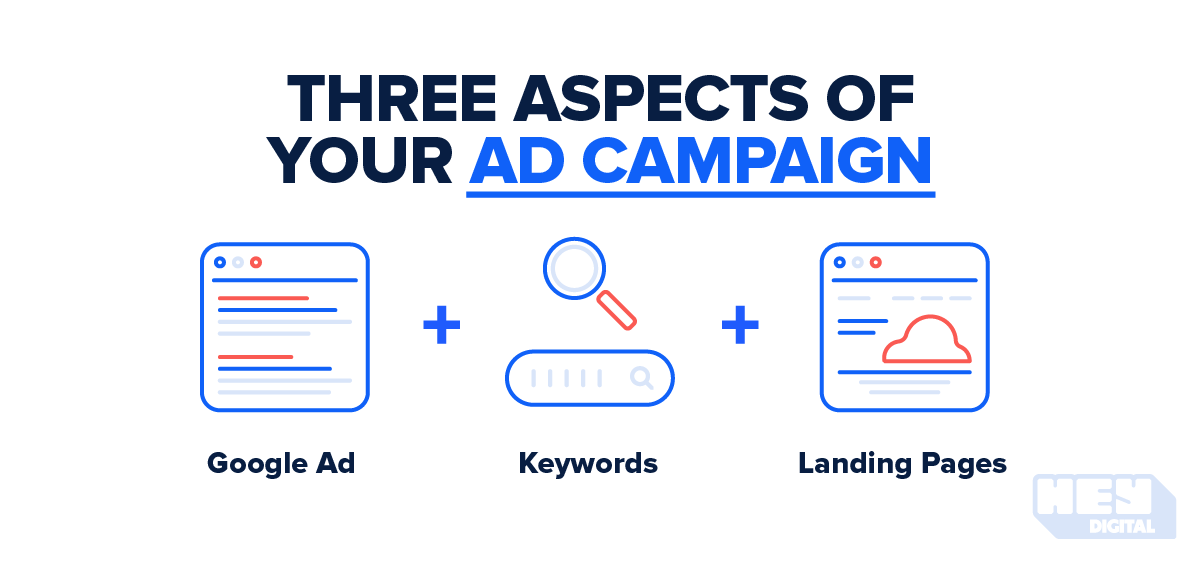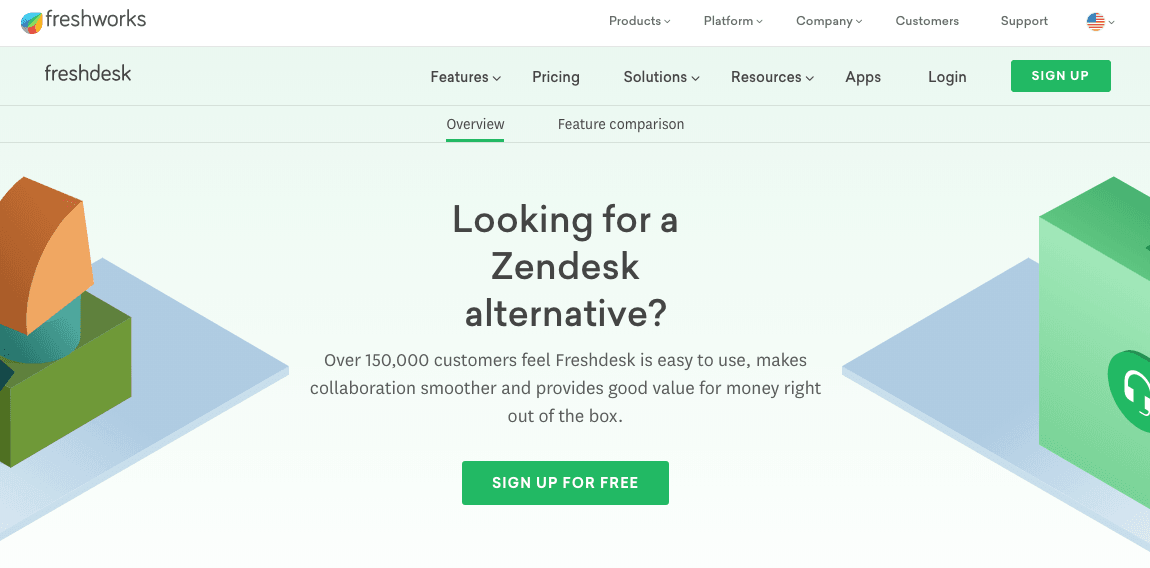10 Ways to Improve Your Google Ads Quality Score
You’re sitting in front of your laptop, eyes fixed to the overview of your Google Ads campaign.
Just a few seconds, and you’ll hit that button. Your campaign will go live.
There’s just one problem.
You’re seeing the term: ‘Quality Score’ and blanking out.
You know keywords. You know search volume. God knows you know CPC (budget calculations are haunting you in your dreams).
But Quality Score sounds elusive. And yet, your ultimate cost per click depends on it.
Worry not, because we’re going to cover the factors influencing your Google Ads Quality Score, and show you 10 ways to improve it.
Let’s dive in!
What Is the Google Ads Quality Score?
Google Ads Quality Score is a way of determining your ad’s relevance to searchers who will see it.
Google evaluates three aspects of your ad campaign:
- Your ad
- The keywords you’re targeting
- Your landing page

The goal is for the three to form a well-rounded whole that’s an absolute delight to searchers.
The higher your Quality Score is, the lower your CPC will be.
The Quality Score itself isn’t a guarantee of ad success, but it does follow the logical line of reasoning. The practices you implement when optimizing for QS could help you improve your conversion rate, as well.
Quality Score Factors
There are a few precise factors Google uses to determine your Quality Score:
- Click-through rate (CTR): If your CTR is high, your Quality Score will improve.
- Keywords and search terms: Are you targeting the same keywords you’re using in your ad copy? For example, if you targeted “email marketing for enterprises” as a keyword, and the ad is about email marketing for small businesses, your Quality Score would be affected.
- Landing pages: If your landing pages are relevant to the search query and the ad, your Quality Score will improve.
- Device performance: If your ads perform better on desktop than they do on mobile, or vice versa, your QS will be affected.
- Account history: Your previous ad campaign results and Quality Scores will affect new campaigns.

You’ll find a detailed breakdown of your Quality Score in the ad campaign manager, under the “Keywords” tab.

Make sure you check it out because it’ll alert you to the areas you should work on.
And now, it’s time to make that Quality Score sky high!
How to Improve Your Google Ads Quality Score
1 Multiple Products? Multiple Ads
If your company sells multiple products or offers numerous services, don’t advertise them all in one ad.
Someone looking for email marketing software for small businesses won’t care that you also have software for enterprises. Instead, they’ll skip your ad. It doesn’t look like you’re talking to them, after all.
Your CTR will stagnate, signaling to Google that your ad is not relevant.
Just consider this ad, which appears when we search for ‘email marketing software for small businesses:’

It’s great that these folks have advanced email marketing tools, but the ad shouldn’t be targeting the “email marketing software for small businesses” keyword.
Instead, they should have created an ad speaking to the needs of small business owners.
2 Use Keywords in Your URLs
URLs are an underrated goldmine of Quality Score improvement.
Take a look at these two ads, both targeting ‘cold email software’:

Reply mentions the right keyword in the ad headline (‘cold email software’), notice that Campaign Monitor doesn’t even mention this keyword at all in the headline. Instead, they are targeting ‘Email Management Software’.
But we’re here to talk about keywords in URLs, not headlines I hear you say…
If you take a look at the URL used in the Campaign Monitor ad, they don’t add or use any keywords.
However, the ad from Reply includes the keywords in their URL: /cold-email/software
That URL alone is descriptive enough to boost your Quality Score.
Namely, a relevant URL boosts your keyword and search term relevance.
So don’t be shy; add a keyword to the URL displayed in your ad. After all, every piece of your ad is there to attract prospects, and assure Google that your ad is relevant.
3 Use Keywords in Your Headlines and Landing Pages
Keywords are the universal way of saying: ‘You’re looking for this. We’ve got it. And then some.’
Every time a potential customer clicks on your ad and lands on your website, they want to see that they’re in the right place at the right time.
So let’s run a quick search. We need a time tracking tool, so we’re looking for ‘time tracking” Simple, right?

The second ad from Timely uses the exact keyword we’ve searched for (‘time tracking’). We’re automatically recognizing the intent and taking them into consideration.
Timely’s ad then directs us to a page which has a headline that also features the keyword that we searched for. Their secondary headline is then clearly actioning a pain point that someone searching for time tracking software is likely to have.

This will likely lead us to spend more time on this page as we read through it which in turn signals to google that the landing page and ad are relevant.
Using the same keywords in your ad copy and landing pages increases your relevance, as well as your CTR. Consequently, your Quality Score improves.
4 Make Your Landing Page Lightning Fast
On average, people don’t wait longer than 3 seconds for a page to load. And when the stakes are as high as they are in PPC, you want to make sure every part of the equation is performing as well as expected.
Otherwise, potential customers will go back to the results page and choose another ad to click on.
Yes, that will affect your Quality Score.
You can improve your load speed by:
- Optimizing images
- Minifying HTML, JavaScript and CSS
- Upgrading to a dedicated hosting plan
- Using a content delivery network (CDN)
- Hosting videos on YouTube or Vimeo instead of integrating them natively
- Removing unnecessary elements (common culprits are scripts and plugins)
- Utilize Google Tag Manager for scripts such as Facebook Pixel, Hotgar, etc.
For specific insights, run Google’s PageSpeed Insights, Test My Site, and Pingdom tests. They’ll show you precisely what you can improve.
5 Improve Your Copy, Improve Your CTR
When a prospect sees your ad, they want to feel like you’re reading their mind. They want to squeal in delight because, yes, this is the solution I was looking for!
(Google wants them to do it, too.)
Google’s bots have no way of understanding what searchers are thinking (for now), but they can get a pretty good guess based on the keywords in your ad copy.
If your ad copy is enticing, your CTR will be higher. Consequently, your Quality Score will improve.
Your ad copy should match the searcher’s intent and motivate your potential customers to take action.

Don’t do this.
Pterylae don’t mention ‘database’ in the headline or copy and in general, the ad copy doesn’t in any way trigger an emotional response from the searcher. If you then go through to look at the Pterylae website you’ll see that this ad isn’t relevant for the search term and it’s highly unlikely a searcher will spend much time on this page. This will result in a low quality score.
Instead, do this:

You’ll notice Ragic utilize paraphrases of the search query. They have actionable ad copy with strong social proof that makes you much more likely to click through. The only thing missing is the word ‘software’ in the headline.
6 The Two Ratios You Need to Improve Your Quality Score
There are two ratios you should pay attention to if you want to improve your Google Ads Quality Score:
- Keyword to ad ratio
- Search term to keyword ratio
Keyword to ad ratio
If you target a lot of keywords, you don’t stand a chance of covering them all in your ad copy. This automatically means your Quality Score will be lower.
Search term to keyword ratio
Make sure that you’re focusing on search terms, and using keywords only as a means of getting to them. Don’t target dozens of keywords that might not even reach your desired search terms.
It’ll just cause you to leak Quality all over the place.
The key is understanding what your target audience is searching for (search terms). Then, reverse engineer it to get to the keywords. Finally, write your copy.
7 Dynamic Keyword Insertion
Dynamic Keyword Insertion is excellent if you don’t want to create ads for every single product or service that you offer.
DKI swaps out certain keywords for other keywords, depending on what the searcher looked up. This means we can personalize the headline copy of the ad for what the search query is.
Let’s say we are looking up ‘project management’. We would include these keywords to dynamically update:
- project management tool
- project management tools
- project management software
This allows you to make your ad more relevant, improving your CTR and, consequently, your Quality Score.
8 Negative Keywords
While adding negative keywords doesn’t directly affect your Quality Score, it does affect it indirectly.
When your ads are relevant, searchers will click on them. Your CTR will improve. They’ll spend more time on your landing pages. Consequently, your Quality Score will improve.
But if your ads are displayed to people looking for something else, they won’t click on them. Or they will, and they’ll leave your landing page immediately.
Negative keywords are the keywords you don’t want to target.
Negative keywords stop you from wasting your ad spend on people who are looking for something else entirely. And if your ad is only displayed for relevant queries, your Quality Score will improve.
9 Match the Intent
Ultimately, improving your Quality Score is all about matching the searcher intent.
Let’s say you were targeting a competitor with a comparison post.
You’d target the relevant keywords ‘Your Brand Name vs Your Competitor name’ or ‘Your Brand Name Alternative’. You would write copy that shows why the searcher should take a look at your brand over the competitors. Maybe you have a free trial and they don’t, maybe you have more reviews or happy customers for example.

You’d include the keyword in the headline. In this example you can see the keyword was ‘Freshdesk vs Zendesk’ and this is reflected in the headline.
All of this would improve the relevance of your ad and your CTR (both of which affect your Quality Score).
And then, when your prospects click through to your landing page, you have to match their intent again.

Your landing page can’t be generic. Instead, it should continue the conversation you started in the ad – a conversation with your target audience, and no one else.
Freshdesk is using the main headline in the landing page to continue the conversation and affirms the searcher’s intent.
10 Use Mobile-Friendly Ad Extensions
Your ad performance on different devices can affect your Quality Score, as well.
By 2021, mobile advertising will account for 72% of total budgets. With mobile search traffic overtaking desktop to 57% it’s important to get ahead early.
The easiest way to improve it is by using mobile-friendly ad extensions:
- Phone number
- Location
- Links to specific pages.
[Insert an example of mobile-friendly? or a gif]
https://giphy.com/gifs/cat-mobile-fishes-rOzpze0aCVlyo
After all, phone users are looking for immediate answers. Use the right ad extensions to satisfy their intent, and Google will love you for it.
The Science of Improving Your Ad Quality Score

To sum it up:
- Use keywords everywhere to match the searcher intent: in the URL, in your ad headline, in your ad copy, and on your landing pages
- If you have multiple products, run numerous ads (or use Dynamic Keyword Insertion)
- Improve your landing page load speed
- Pay attention to ratios: keyword to ad, and search term to keyword
- Don’t be afraid of negative keywords
- Use mobile-friendly ad extensions
And there you have it! If you follow our advice, you’ll be on your way to a sky-high Quality Score in no time.
Happy advertising!
Say ‘Hey’ to growth!
If the answer is yes and you want to work together, click the button below.





